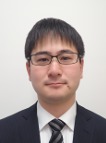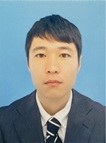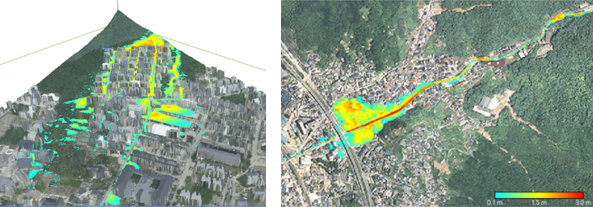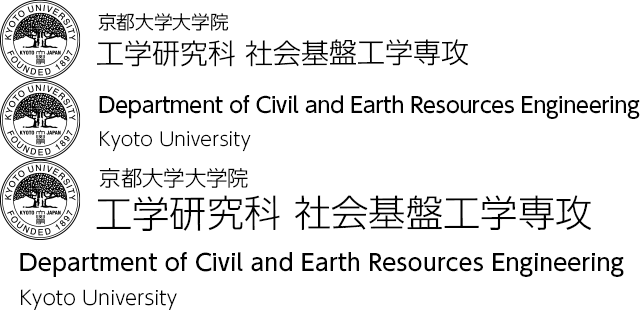Erosion and Sediment Runoff Control Engineering
Understanding sediment transport mechanisms and preventing sediment disasters from mountains to coasts in fluvial systems, including volcanic watersheds
In a sediment transport system from mountainous area through river area to coastal area including volcanic watershed, disasters occur due to the various kinds of sediment transport phenomena. The phenomena and processes are important factor to produce safe sound sediment environment in river basin. To mitigate the disasters and to understand the dynamics of sediment transport and water in the sediment transport system, various field observations, hydraulic experiments, and development of simulation models and systems are carried out in our division.
Academic Staff
Kana NAKATANI
 Professor (Disaster Prevention Research Institute)
Professor (Disaster Prevention Research Institute)
Research Topics
My main research topics are sediment-related disasters such as debris flows and woody debris occur from mountainous areas. We are conducting research focusing on the mechanisms, behaviors and also effective disaster prevention measures with numerical simulations, hydraulic experiments, field surveys and observations.
Contacts
Ujigawa Open Laboratory, Disaster Prevention Research Institute
TEL: +81-75-611-5263
E-mail: nakatani.kana.4z![]() kyoto-u.ac.jp
kyoto-u.ac.jp
Kazuki YAMANOI
 Associate Professor (Disaster Prevention Research Institute)
Associate Professor (Disaster Prevention Research Institute)
Research Topics
My main research topics are quantification of the influence of sediment yield to inundation, damage estimation of the heavy rainfall disaster, and evacuation system during sediment-related disaster. These researches are conducted by developing an integrated numerical simulation system of the rainfall runoff, sediment yield, sediment runoff, and inundation.
Contacts
Ujigawa Open Laboratory Disaster Prevention Research Institute
TEL: +81-75-611-4397
FAX: +81-75-611-4397
E-mail: yamanoi.kazuki.6s![]() kyoto-u.ac.jp
kyoto-u.ac.jp
Shoki TAKAYAMA
Associate Professor (Disaster Prevention Research Institute)
Research Topics
Based in the Hodaka Sedimentation Observatory near the Yake-dake volcano, we are conducting researches on sediment runoff processes in a mountain stream and sediment disaster mechanisms/countermeasures in a volcanic area.
Contacts
Hodaka Sedimentation Observatory, Disaster Prevention Research Institute
436-13 Nakao, Okuhida Onsengo, Takayama, Gifu 5061422, Japan
TEL: +81-57-889-2154
E-mail: takayama.shoki.3z![]() kyoto-u.ac.jp
kyoto-u.ac.jp
Research Topics
Sediment Disaster Prevention
Landslides, debris flow, woody debris, and channel de-formation cause sediment disasters. Recently, sedimentation and flood damage have become serious problem, in which sediment generated in mountainous areas moves downstream burying channels and causing damage. Sediment disaster prevention is one of the important social topics.
Our laboratory researches on the generation mechanism, prediction techniques, upgrading hazard map with various field observations, hydraulic experiments, and development of simulation models and systems. Recently, numerical simulations are applied for detail hazard zoning and for considering effective countermeasures.

Fig. 1: Debris flow simulation result(left)
and sediment and flood damage simulation result (right).

Fig. 2: Projection results of maximum water discharge and volume of sediment yields
under rainfall events in present and future climate.
Sediment Runoff Processes in Sediment Transport System
Sediment is produced in mountainous areas and trans-ported to coastal area through rivers. These processes are important factor to produce safe sound basin environment.
With field observations, hydraulic experiments and numerical analysis, we focus on sediment production mechanism and sediment transport processes.

Fig. 3: Field experiment with hydrophone and other equipment to observe bed load
in Hodaka Sedimentation Observatory.
Sediment Disaster Mitigation in Volcanic Watersheds
Volcanic watersheds have the potential for diverse and large-scale sediment-related disasters. Volcanic eruptions can trigger not only pyroclastic flows and lava flows but also snowmelt-type volcanic mudflows, which are caused by rapidly melting accumulated snow. Additionally, when volcanic ash covers mountain slopes, it can hinder the rainfall infiltration into the ground, leading to an in-creased frequency of debris flows.
Based in the Hodaka Sedimentation Observatory near Mount Yake, an active volcano, we are advancing observational research on sediment dynamics in volcanic water-sheds and developing prediction methods for volcanic mudflows and debris flows.


Fig. 4: Hodaka Sedimentation Observatory (left) and Mount Yake seen from Taisho Pond (right).
